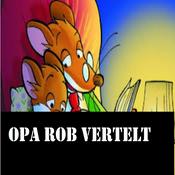183 afleveringen

Welcome to Dam Parenting
10-1-2026 | 1 Min.
Welcome to Dam Parenting in 2026.Here's a brief overview of who we are, what we do and what you can expect from us.

Calm in the Chaos: Managing Stress and Anxiety as an International Parent
07-1-2026 | 29 Min.
Parenting abroad comes with an invisible stress load — new systems, cultural differences, mental load, and the constant feeling of needing to keep up. For many international parents, this shows up as chronic overwhelm, anxiety, and a sense of losing themselves along the way.In this episode of DAM Parenting, therapist Rachel Forster joins us to talk about what stress and anxiety really look like in parents — especially those raising children far from their home country.This is not about fixing yourself or adding more to your to-do list. It’s about calming the nervous system, reducing overwhelm, and gently reconnecting with who you are beneath the roles of parent, planner, and problem-solver.You’ll hear about:Why parenting abroad increases stress and mental loadHow anxiety shows up in high-functioning parentsSimple, body-based nervous system tools you can use in daily lifeHow to reconnect with your authentic self without pressure or guiltThis episode includes a short, guided regulation reset you can try while listening — even if you’re exhausted, overstimulated, or short on time. Guest: Rachel Forster, Therapist Learn more: rachaelforstertherapy.com

Nollaig na mBan: Why January Is for Pausing, Not Pushing
06-1-2026 | 5 Min.
January 6th marks Nollaig na mBan — Women’s Christmas — a traditional Irish day that honours women’s unseen work and the need for rest after the intensity of Christmas.In this short DAM Parenting episode, Eva shares why January was never meant to be about productivity, motivation, or “starting fresh” — especially for mothers carrying the mental load of family life.This episode explores:What Nollaig na mBan (Women’s Christmas) really isWhy winter is a season of pause, not pressureThe invisible labour women carry — especially at ChristmasA gentler way to enter the new year as a parentWhether you’re an expat, immigrant parent, or raising children far from home, this episode is an invitation to slow down — without guilt.Listen now for a moment of reflection, recognition, and rest. If this episode resonates, share it with another mother — or claim your own Nollaig na mBan today.

Day 12 of parenting abroad episodes
31-12-2025 | 7 Min.
First off - please excuse the quality! I only got to record this after arriving back from holidays, unpacked, dinner, and kid put in bed! And fireworks - oh man i didn't realise you could hear them on the mic- so it was a quick record and hope for the best!For the rest - thanks for being here in 2025 (and maybe 2024 and 2023!) and I hope you will be sticking around in 2026 for so much more to come - new voices, new topics and hopefully a less last minute podcast!

Love & Communication Abroad: Strengthening Relationships as "Expat" Parents
30-12-2025 | 23 Min.
Eva and Angela explore the realities of relationships abroad — cultural differences, distance from support networks, and the emotional labour of parenting internationally. A grounded conversation about staying connected as partners and parents. Reshared ahead of the New Year.
Meer Kind en gezin podcasts
Trending Kind en gezin -podcasts
Over Dam Parenting
Luister naar Dam Parenting, Het Klokhuis en vele andere podcasts van over de hele wereld met de radio.net-app

Ontvang de gratis radio.net app
- Zenders en podcasts om te bookmarken
- Streamen via Wi-Fi of Bluetooth
- Ondersteunt Carplay & Android Auto
- Veel andere app-functies
Ontvang de gratis radio.net app
- Zenders en podcasts om te bookmarken
- Streamen via Wi-Fi of Bluetooth
- Ondersteunt Carplay & Android Auto
- Veel andere app-functies


Dam Parenting
download de app,
luisteren.




































